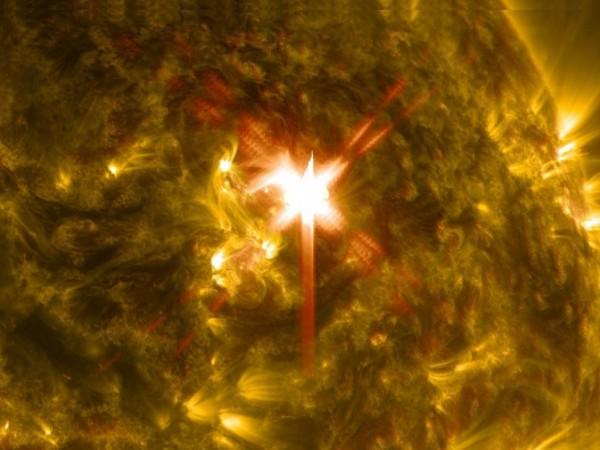
An immense solar flare erupted from the sun over the weekend, blasting Earth with electromagnetic radiation. A coronal mass ejection (CME) is believed to be associated with the event.
The X1.0 flare erupted at 1:48 p.m. ET (11:10 p.m. IST) on 29 March and scientist are looking for possible geomagnetic storm that would occur on Wednesday, the day the CME is expected to touch the Earth. The event was captured by NASA's Solar Dynamics Observatory.
The eruption was a radio blackout event according to National Weather Service's Space Weather Prediction Center, which also reported that the solar flare could cause GPS errors and even affect satellites. Electrical power lines could strike extra current and high frequency communications could be obstructed when the radiation hits Earth.
Solar flares are huge bursts of radiation but the harmful radiation from a flare cannot pierce through the Earth to physically harm people, according to NASA. However, powerful solar flares can affect the atmosphere of our planet in the layer where GPS and communication signals travel.
NASA classified the solar flare as an X1-class eruption, which are the most intense eruption.
Space Weather Prediction Center under the National Oceanic and Atmospheric Administration has issued a geomagnetic storm watch for 2 April. "A G1 (Minor) geomagnetic storm WATCH has been issued for 02 April as a series of 'glancing-blow' coronal mass ejection (CME) arrivals associated with the recent flare activity from sunspot region 2017 are expected at Earth," the Space Weather Prediction Center states on Facebook.
There is a minor possibility of additional solar flares blasting from sunspot AR2017 in the next few days.
Sunspot AR2017 was fairly active over the weekend, producing a total of three solar flares. In addition to the 29 March X-class solar flare, two M-class flares erupted from the region on 28 March and 30 March. The sun also emitted four X-class solar flares between 23 October and 30 October.
The largest flare was emitted on 9 August 2011. That flare was an X6.9.









